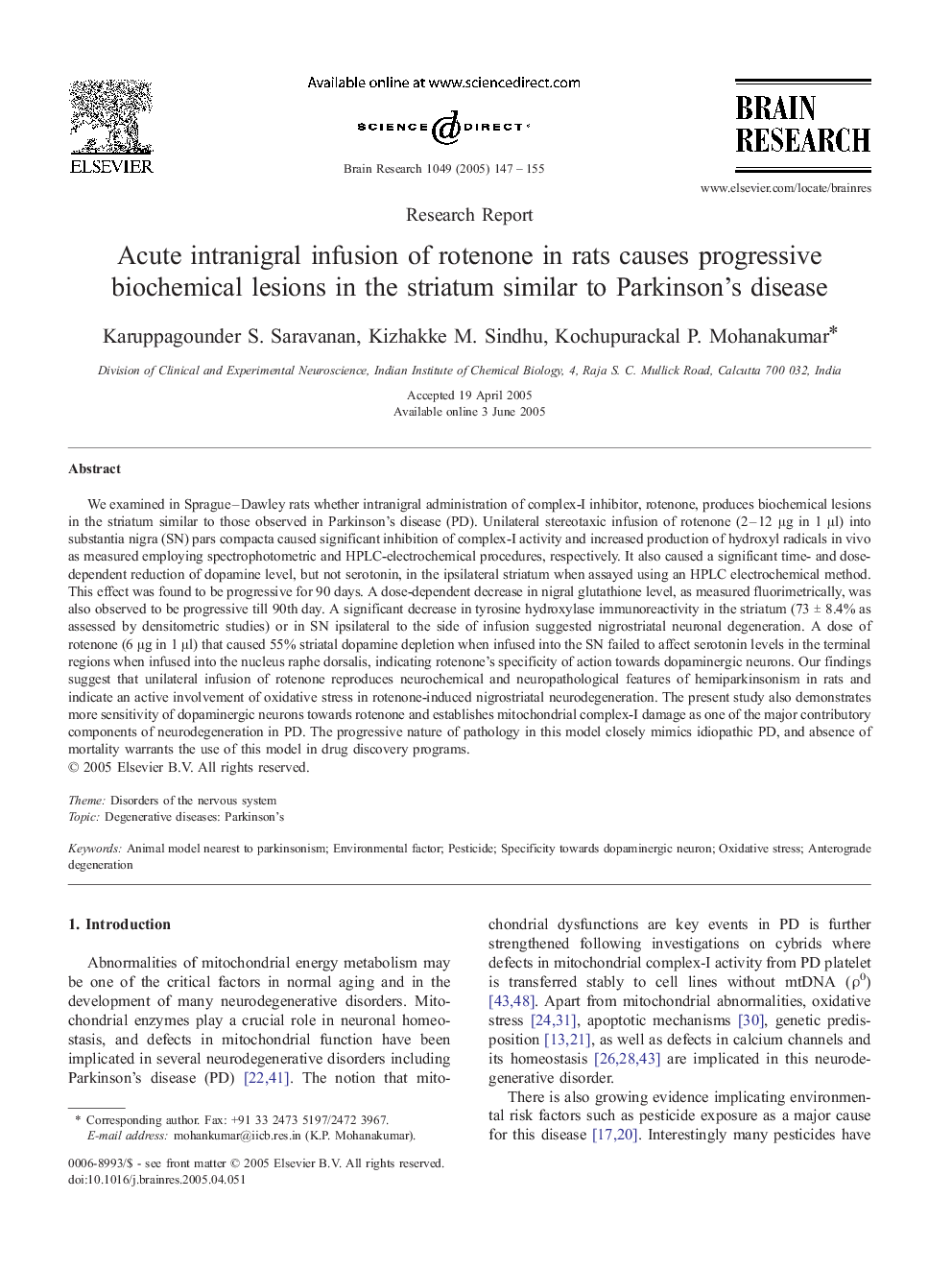| Article ID | Journal | Published Year | Pages | File Type |
|---|---|---|---|---|
| 9416152 | Brain Research | 2005 | 9 Pages |
Abstract
We examined in Sprague-Dawley rats whether intranigral administration of complex-I inhibitor, rotenone, produces biochemical lesions in the striatum similar to those observed in Parkinson's disease (PD). Unilateral stereotaxic infusion of rotenone (2-12 μg in 1 μl) into substantia nigra (SN) pars compacta caused significant inhibition of complex-I activity and increased production of hydroxyl radicals in vivo as measured employing spectrophotometric and HPLC-electrochemical procedures, respectively. It also caused a significant time- and dose-dependent reduction of dopamine level, but not serotonin, in the ipsilateral striatum when assayed using an HPLC electrochemical method. This effect was found to be progressive for 90 days. A dose-dependent decrease in nigral glutathione level, as measured fluorimetrically, was also observed to be progressive till 90th day. A significant decrease in tyrosine hydroxylase immunoreactivity in the striatum (73 ± 8.4% as assessed by densitometric studies) or in SN ipsilateral to the side of infusion suggested nigrostriatal neuronal degeneration. A dose of rotenone (6 μg in 1 μl) that caused 55% striatal dopamine depletion when infused into the SN failed to affect serotonin levels in the terminal regions when infused into the nucleus raphe dorsalis, indicating rotenone's specificity of action towards dopaminergic neurons. Our findings suggest that unilateral infusion of rotenone reproduces neurochemical and neuropathological features of hemiparkinsonism in rats and indicate an active involvement of oxidative stress in rotenone-induced nigrostriatal neurodegeneration. The present study also demonstrates more sensitivity of dopaminergic neurons towards rotenone and establishes mitochondrial complex-I damage as one of the major contributory components of neurodegeneration in PD. The progressive nature of pathology in this model closely mimics idiopathic PD, and absence of mortality warrants the use of this model in drug discovery programs.
Keywords
Related Topics
Life Sciences
Neuroscience
Neuroscience (General)
Authors
Karuppagounder S. Saravanan, Kizhakke M. Sindhu, Kochupurackal P. Mohanakumar,
